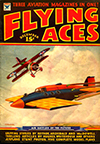FROM the pages of the October 1932 number of Sky Fighters:
Editor’s Note: We feel that this 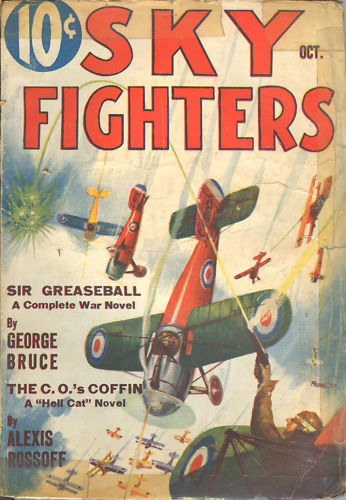 magazine has been exceedingly fortunate in securing R. Sidney Bowen to conduct a technical department each month. It is Mr. Bowen’s idea to tell us the underlying principles and facts concerning expressions and ideas of air-war terminology. Each month he will enlarge upon some particular statement in the stories of this magazine. Mr. Bowen is qualified for this work, not only because he was a war pilot of the Royal Air Force, but also because he has been the editor of one of the foremost technical journals of aviation.
magazine has been exceedingly fortunate in securing R. Sidney Bowen to conduct a technical department each month. It is Mr. Bowen’s idea to tell us the underlying principles and facts concerning expressions and ideas of air-war terminology. Each month he will enlarge upon some particular statement in the stories of this magazine. Mr. Bowen is qualified for this work, not only because he was a war pilot of the Royal Air Force, but also because he has been the editor of one of the foremost technical journals of aviation.
Getting Your Hun
by Robert Sidney Bowen (Sky Fighters, October 1932)
PETE BANKS, of the 65th Pursuits, flashed into a screaming half roll, and went thundering down to pour burst after burst into the checkered Fokker. . . .
And then the story goes on to tell how Pete finally got his Fokker and returned home to be made round-shouldered by all the medals they pinned on him. But, if the truth be known, Pete, I wouldn’t pin a medal on you. Sure, I’d tell you that you were a swell guy for getting that Hun. And then I’d turn around and ask you why you wasted so much costly ammunition. Huh? What’s that? Oh, it was just that way in the story. Well, then I guess that it would be a pretty good idea if we told these fledglings here a little about the technical side of getting Huns.
Now, just so’s we’ll get off on the right foot we’ll make this statement. In the final analysis the only thing that really counts is getting your Hun. If you can bring him down by tossing tomatoes at him, why so much the better. But during the late war the recognized method was shooting them down with nice stinging bullets. However, there are ways and ways to get an enemy ship.
And, believe it or not, you do a big part of the job of getting an enemy ship before you leave the ground. What’s that? Why, you ask? Well, give me time to tell you about it. Just sit still, and don’t be fussing around so much.
Now let us say that we are flying an S.E.5a, powered with a 210 hp. Hisso-Viper engine. On that kind of ship we’d have two Vickers guns mounted on the engine cowling and geared to shoot between the revolving propeller blades. And, mounted on the top center section, we’d have a single Lewis gun that fired over the top of the propeller blades. Now, right here I want to put in a word about that Lewis gun. The Lewis machine gun, which was an aerial adaptation of the regular infantry machine gun, was never geared to fire between the propeller blades. It just couldn’t be done, for technical reasons we won’t take time to mention here. So if you ever read in a story where it was done, why you can just put it down that the author was thinking about the Vickers gun when he was writing the yarn.
Okay, let’s get on. We have three guns, a Lewis and two Vickers. The Lewis is fed by a drum that contains ninety-seven rounds. And the Vickers are fed by belts that contain a varying number of rounds. The usual number carried was about six hundred rounds in each belt. Now for the two Vickers that would make a total of around twelve hundred rounds. And on the Lewis there would be a drum of ninety-seven rounds. And in containers in the cockpit the pilot would carry two extra drums. So the total number of shots that the pilot could wham at a Hun plane was around fifteen hundred.
Whether you think so or not, the Vickers guns were finished for the day once the belts were run through. And that was for the simple reason that you didn’t carry extra belts. But, when a drum of bullets on the Lewis gun were used up, why, you could take off the empty drum and take one of the spare full drums and stick it on. Doing that was a simple job yet you had to watch yourself, else the drum would go sailing back over the tail plane. Here’s how you did it. The Lewis was mounted so that the end of the barrel slipped down into a snap catch. When that snap catch was released (by pulling a wire that lead down into the cockpit) the gun would tilt back on its mounting to a forty-five degree angle. In other words, the rear end of the gun would tilt down toward you sitting in the cockpit. In that way you could reach the drum with your hand. First you stuck your hand up and slipped four fingers under the leather handle in the center of the top of the drum. Then with your thumb you pressed a little sliding catch at the bottom of one side of the handle. Doing that, released the drum from the post it’s mounted on. And then you lifted the drum clear of the post and brought it back toward you, being careful to keep the front part of the drum tilted toward the prop wash. If you didn’t the wind would get under the underneath part of the drum and force the drum and your arm back and the drum would go sailing away.

BUT we got the empty drum off alright, so we’ll grab up one of the full drums in the cockpit container and put it back on the gun by simply reversing the operation. In other words, tilt it toward the prop wash, fit it down over the post and release the catch. Then we load the gun by pulling back the loading handle on the side of the gun. And then we shove up the rear of the gun so that the end of the barrel slips down into the snap catch. And then she’s all set to fire ninety-seven more rounds.
Well, so much for that. But let’s go back to where we haven’t loaded the guns. We’re still on the ground, and in the armament hut checking our guns to make sure that everything is in good working order. Now what we’ll do is load the belts and the drums. On the table in front of us we have a pile of regular bullets, a pile of tracer bullets, and a pile of incendiary bullets. And right close to us we have a dummy gun barrel. We load the belts in this order. First a regular bullet, then a tracer bullet, and then an incendiary bullet. And so on in that order until the belts and the drums are full. But let me say right here that every pilot had different ideas about what kind of bullets he’d carry. Some loaded two regular to one tracer and so forth. And of course if you were going after balloons you’d put in lots of explosive bullets. But before you put in any bullet, regardless of what kind it was, you’d first fit it into the dummy barrel to make sure that it would fit. In short, you personally inspected every single round that you intended to fire at some Hun ship. You might think that that was a waste of time, if you had a good armament officer. But, don’t forget, those little bullets and your little ship were the difference between life and death for you. So naturally you personally looked over everything, just in case.
Well, let’s say that the guns are loaded, the ship inspected, and that you are sailing over Hunland in quest of another bird for your bag.
Ah, you spot a dark speck off to the left and on the same level as you. You squint at it a moment and by knowing the silhouettes of German ships you can tell what type it is. This time it’s a Fokker. So you start to climb because in a dog fight the top man has the advantage. Why? Well, because a pursuit job can only fire one way . . . straight forward. Therefore his blind spot is his tail. And if you are above him it’s a darn sight easier to drop down on his tail than it is to try and climb up to it, for the simple reason that while you’re climbing up, he’s dropping down on you.
Well, for the sake of this chin-fest let’s say that you get above him a few hundred feet or so. He spots you coming and tries to get away. Now you’re all set to dive down on his tail and fire. You slide your fingers up to the gun release levers on the joystick and maneuver your ship until you get him in your sights.
And we’ll stop right there for a second while we talk about the gun sights.
There were two kinds of sights used. (See Sept. “Sky Fighters.â€) One was called the telescopic sight, and the other the right sight. The telescopic sight was a tube about twelve inches long mounted parallel to the two Vickers guns. At one end it had the ring sight markings on the lens so that you sighted the same as you would if using the regular ring sight. Now, the ring sight was in two parts, the ring and the bead. The ring part was a metal ring about three inches across mounted on a post at the rear of the gun. The post continued into the ring to form a quarter inch ring in the center. And mounted on end of the barrel of the gun was a post that tapered up into a red colored bead.
What was that? What do you mean mounted on the gun? Good boy, I wondered if you’d trip me up on that. When you use only one gun the sights are mounted on that gun, usually. But when you use two guns, as we have in this case, the sights are mounted between the guns.
But about that ring sight. When you sight so that the red bead forward is square in the quarter inch ring at the rear it means that your guns (the Lewis included) are aimed at everything that that red bead is on. Now, you have three paths of fire, the two Vickers and the Lewis. Naturally you want those three paths of fire to converge at a certain point. The point determined upon is dependent upon the whims of the pilot. But the average distance is about two hundred yards from the nose of the plane. And so the guns are tilted or moved sidewise to effect that range. That is done on the ground of course, and the guns fastened securely in the desired position.
Alright, alright, I’m coming to it. What about the large ring? Well, here’s the idea of that. The average war plane had a speed of about 100 m.p.h. Now, let us say that a Hun ship is flying across your sights. If you waited until the red bead was on him and then fired, why, he would be past your bullets by the time they reached him. But if you fired when the outer ring was cutting his cockpit, why, he and the bullets would meet. In other words, the outer ring enabled you to take care of what was termed deflection . . . his speed against the speed of your bullets and the distance they have to travel. Naturally, pilot judgment has to be put into play in every case. But as a sort of standard gauge the ring sight is set so that a ship crossing your path two hundred yards distant will reach the center of the ring at the same time as your bullets, provided you fire when the outer ring is cutting the enemy’s cockpit.
Of course that is assuming that the Hun ship is flying at right angles to you. If he is diving down past the front of you his speed is greater. Therefore you would open fire when he was outside the ring to make sure that he dived into your burst of shots. And if he was climbing up in front of you, his speed would be slower. Therefore you would let him get inside the ring before you opened fire.
In other words, you really look through a ring at the enemy ship and open fire when he has reached the correct spot in that ring. And naturally you place him in the ring, outside it, or on it, as the case may be, so that he is headed toward the center.
A little while back I mentioned about the telescopic sight having the ring sight markings. Well, that’s just what I meant. Marked on the rear lens of the telescopic sight is the ring sight. So you use the telescopic sight just the same way.

Now, naturally, if you took out time to get your Hun this way or that in your sights, he might fool you and keep you chasing around the air all day long. In a scrap you can’t be accurate about that. You take a snap sight and fire, and your tracer bullets (which leave a tiny trail of phosphorous smoke) will give you an idea of where your other shots are going. But tracers start to go cockeyed after about two hundred yards of travel, so that is why the average effective range is about two hundred yards. Beyond that point your tracer bullets aren’t worth a darn. They burn as they go through the air and after a while their path of travel ceases to be straight.
AND now let’s get back to this Fokker we’re after. We start down in a dive and fire . . . and miss. The Fokker skids out of the line of fire. So we follow him around and let drive every time we get him in our sights. And of course all the time we are trying to stick on his tail . . . above him and behind him. But, we do not let our guns keep firing all the time. Our guns will fire about six hundred rounds a minute. So when you figure that out, if we fire for a minute steady we are all out of shots, with exception, of course, of our two extra Lewis drums of ninety-seven rounds each. But we haven’t had time to change the drums, because that’s a tough job to do when you are twisting around in a scrap and making sure that friend Hun doesn’t get on your tail.
So, naturally, we scrap with the idea of making every round count. Of course, every round doesn’t count. But we work that way nevertheless. And so we fire short bursts of, say, ten or twenty rounds at a time. But the idea of Pete Bank pouring burst after burst into that checkered Fokker is out! If he does that he’s wasting shots because if the checkered Fokker is in his sights, one burst will probably do the trick. And if it doesn’t, it means that Pete is just shooting cockeyed.
Now, don’t get the idea that bullet economy was the sole watchword of war pilots. It wasn’t. Yet, at the same time every pilot knew just how many rounds he had to fire. Some did act like Pete Banks, and go crazy and let the whole works go. But the great majority didn’t shoot until they were darn sure they had something to shoot at. And to make as certain as possible that they were going to hit what they shot at, they used the old sights just as much as they could.
When you think it over it really doesn’t take much to send a plane swirling down out of the sky. One little incendiary bullet in the gas tank will do the trick. Or one little bullet right in the skull of your enemy will do it too. Or a nice little burst of ten or a dozen that riddles the engine, or splits the prop will get desired results also. It’s all a combination of marksmanship and flying ability. Some of the greatest aces in the World War were terrible pilots, but they were perfect shots. They could knock the whiskers off a Hun at any distance, and that’s what counted. The Hun might outfly them, but once they got in just one crack, it was all over for the other fellow.
And I guess that it’s all over for us, for the present.
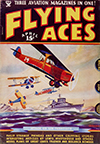 FROM across the Pacific a harmless-looking tramp steamer is churning its way to a point within five hundred miles of San Francisco. There is nothing about her appearance to arouse the slightest suspicions on the part of anyone. She is just like a thousand other tramp steamers—black and smoky and clumsy-looking.
FROM across the Pacific a harmless-looking tramp steamer is churning its way to a point within five hundred miles of San Francisco. There is nothing about her appearance to arouse the slightest suspicions on the part of anyone. She is just like a thousand other tramp steamers—black and smoky and clumsy-looking.





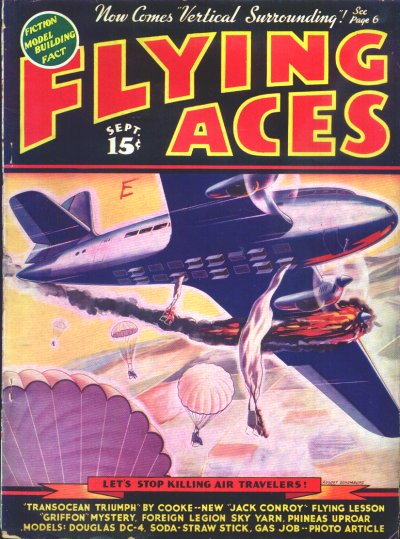 You heard right! That sound can only mean one thing—that Bachelor of Artifice, Knight of Calamity and an alumnus of Doctor Merlin’s Camelot College for Conjurors is back. Yes it’s the marvel from Boonetown, Iowa himself—Lieutenant Phineas Pinkham!
You heard right! That sound can only mean one thing—that Bachelor of Artifice, Knight of Calamity and an alumnus of Doctor Merlin’s Camelot College for Conjurors is back. Yes it’s the marvel from Boonetown, Iowa himself—Lieutenant Phineas Pinkham! 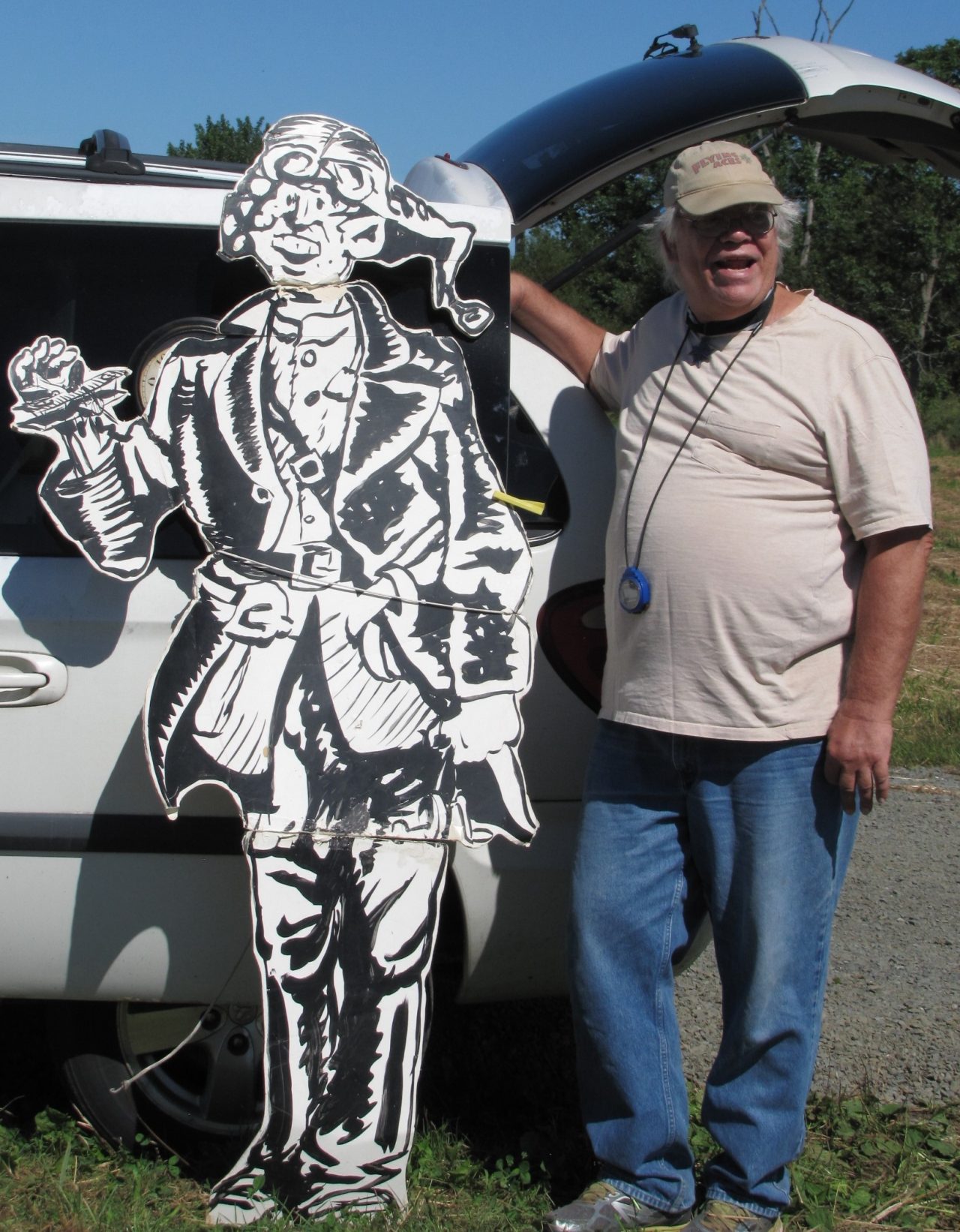
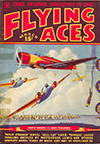
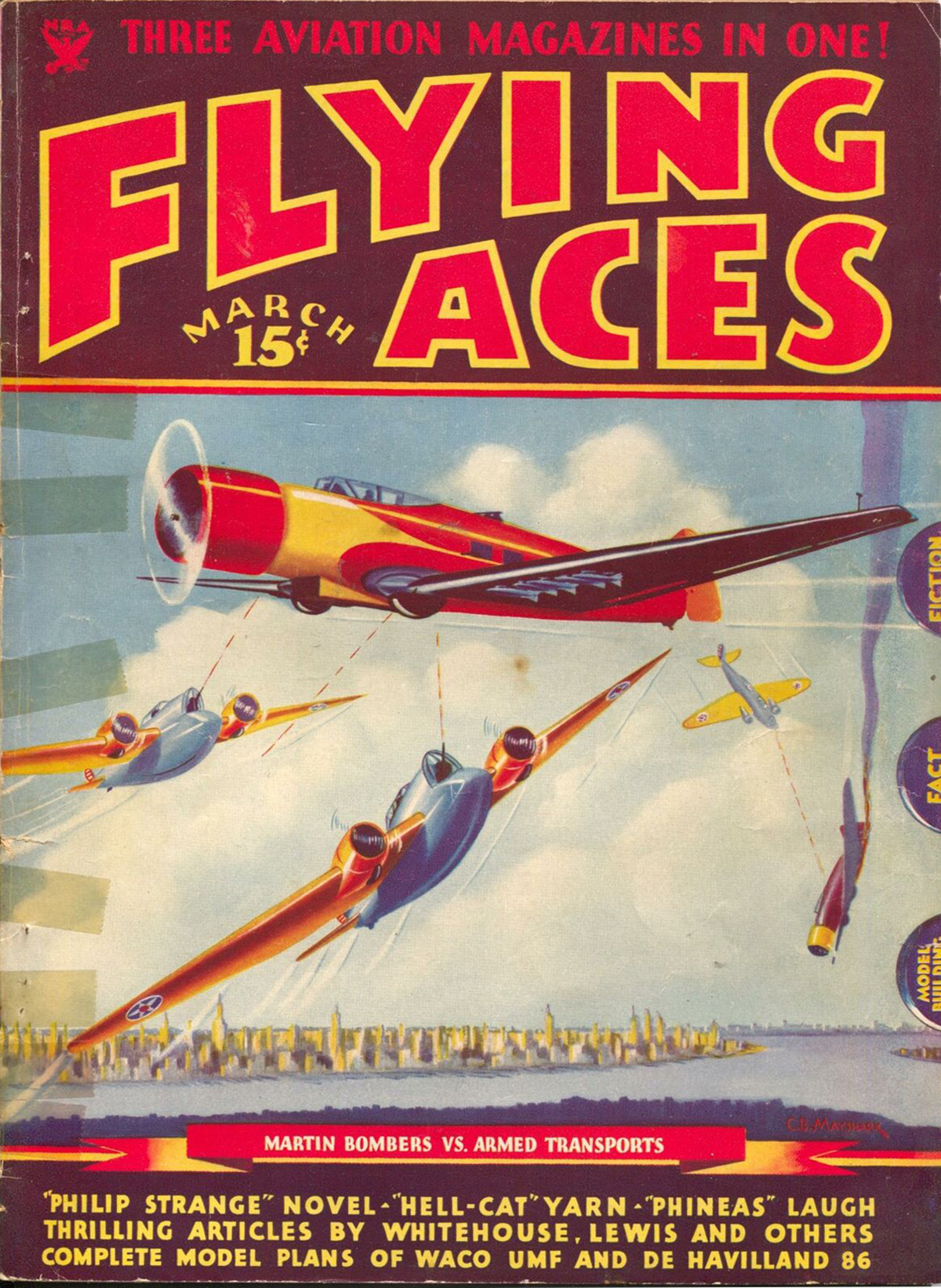
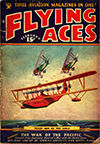

 magazine has been exceedingly fortunate in securing R. Sidney Bowen to conduct a technical department each month. It is Mr. Bowen’s idea to tell us the underlying principles and facts concerning expressions and ideas of air-war terminology. Each month he will enlarge upon some particular statement in the stories of this magazine. Mr. Bowen is qualified for this work, not only because he was a war pilot of the Royal Air Force, but also because he has been the editor of one of the foremost technical journals of aviation.
magazine has been exceedingly fortunate in securing R. Sidney Bowen to conduct a technical department each month. It is Mr. Bowen’s idea to tell us the underlying principles and facts concerning expressions and ideas of air-war terminology. Each month he will enlarge upon some particular statement in the stories of this magazine. Mr. Bowen is qualified for this work, not only because he was a war pilot of the Royal Air Force, but also because he has been the editor of one of the foremost technical journals of aviation.

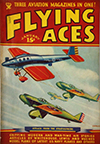

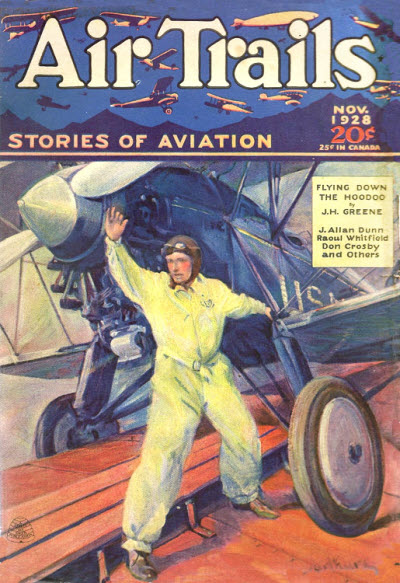 another of
another of 